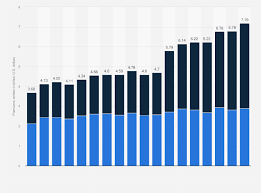In its latest sigma report, the Swiss Re Institute cautions that recent U.S. tariff escalations are likely to slow down global economic growth, with significant implications for global insurance premium growth. The study forecasts a steep decline in premium growth from 5.2% in 2024 to just 2% in 2025, followed by a marginal recovery to 2.3% in 2026.
These figures reflect broader concerns about rising protectionism and the shift toward a more fragmented global economy, where ripple effects are felt across sectors—especially in insurance.
Global Insurance Premium Growth Tied to Slowing GDP Trends
Swiss Re’s outlook connects sluggish global insurance premium growth to broader macroeconomic indicators. After growing by 2.8% in 2024, global GDP is expected to drop to 2.3% in 2025, before climbing slightly to 2.4% in 2026.
This economic deceleration stems from increased U.S. tariffs, which are curbing global trade flows, weakening investment appetite, and triggering inflation. As a result, consumer spending and corporate expansion—two pillars of insurance demand—are projected to stall, dragging down premium growth globally.
Life Insurance Sector Feels the Pressure
One of the hardest-hit segments is the life insurance market. Following a robust 6.1% increase in global life premiums in 2024, growth is expected to plummet to 1% in 2025, before recovering to 2.4% in 2026.
Key factors behind this decline include:
Stagnating household income growth, reducing affordability for long-term life policies
Rising interest rates making alternative savings vehicles more attractive
Increased economic uncertainty, prompting consumers to delay policy purchases
Despite lower premium inflows, life insurers are likely to benefit from improved investment returns, which can partially offset reduced new business volumes.
Non-Life Insurance Faces Slowing Global Premium Growth
The non-life insurance sector—covering property, casualty, auto, and health insurance—is also projected to lose momentum. After recording a 4.7% increase in 2024, global non-life premiums are forecast to rise by just 2.6% in 2025.
Swiss Re attributes this decline in non-life global insurance premium growth to:
Heightened competition in personal lines, particularly auto and health
Easing rate conditions in commercial segments due to increased capacity
A slowdown in claims inflation, driven by reduced economic activity and pricing resistance
Even with softer growth expectations, non-life insurers are relatively well-positioned due to disciplined underwriting and higher investment yields.
The US Insurance Market Faces the Most Severe Impact
As the world’s largest insurance market, the United States is expected to bear the brunt of the premium slowdown. Swiss Re notes that the U.S. insurance sector will likely face:
Reduced demand for commercial coverage as business investments stall
Lower consumer confidence, impacting personal insurance sales
Volatile capital markets complicating asset-liability management strategies
By contrast, emerging markets in Asia, Latin America, and Africa may weather the storm better due to more diversified economies and rising domestic consumption.
Investment Income Will Sustain Insurer Profitability
Despite challenges to global insurance premium growth, Swiss Re offers a relatively optimistic view on profitability across both life and non-life segments. The report highlights that insurers stand to benefit from:
Rising interest rates on bond portfolios
Stable investment-grade returns
Lower claims frequency in selected lines due to moderated economic activity
Additionally, many insurers have adopted conservative reserving, leaner operations, and advanced digital tools—all of which contribute to operational efficiency and bottom-line protection in a low-growth environment.
Strategic Priorities Amid Weak Premium Growth
Swiss Re’s sigma report urges insurers to recalibrate their business strategies to safeguard performance in a slower growth climate. Key recommendations include:
Geographic diversification to reduce overdependence on U.S.-centric revenues
Accelerated product innovation in life and health lines to meet changing needs
Greater emphasis on digital transformation to cut costs and improve scale
Proactive capital and investment management to mitigate volatility
In short, insurers that remain agile, data-driven, and customer-focused will be better equipped to navigate turbulence while capturing new pockets of opportunity.
Conclusion: Rethinking Growth Strategies Amid Economic Fragmentation
The Swiss Re Institute’s warning underscores the close relationship between global insurance premium growth and macroeconomic policy shifts like tariffs. With a pronounced economic deceleration on the horizon, insurers worldwide must brace for slower premium inflows and intensified market fragmentation.
Still, opportunities for sustained profitability remain. Firms that focus on operational excellence, resilience, and product adaptability will continue to thrive—even in an increasingly uncertain and protectionist world.




